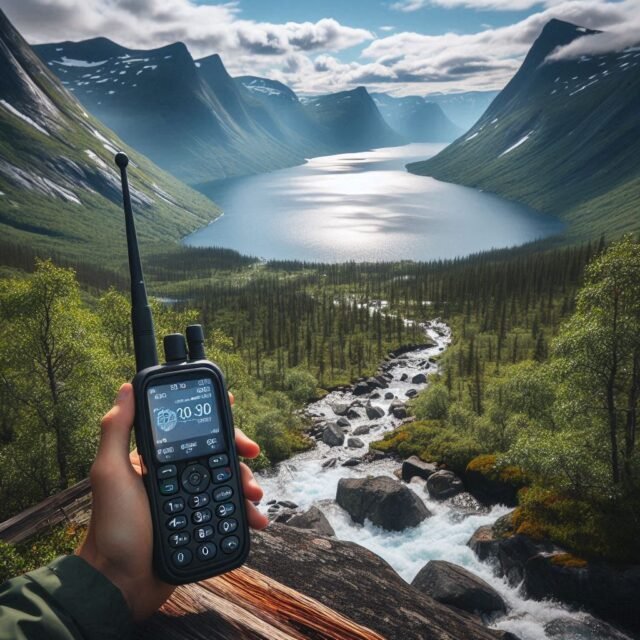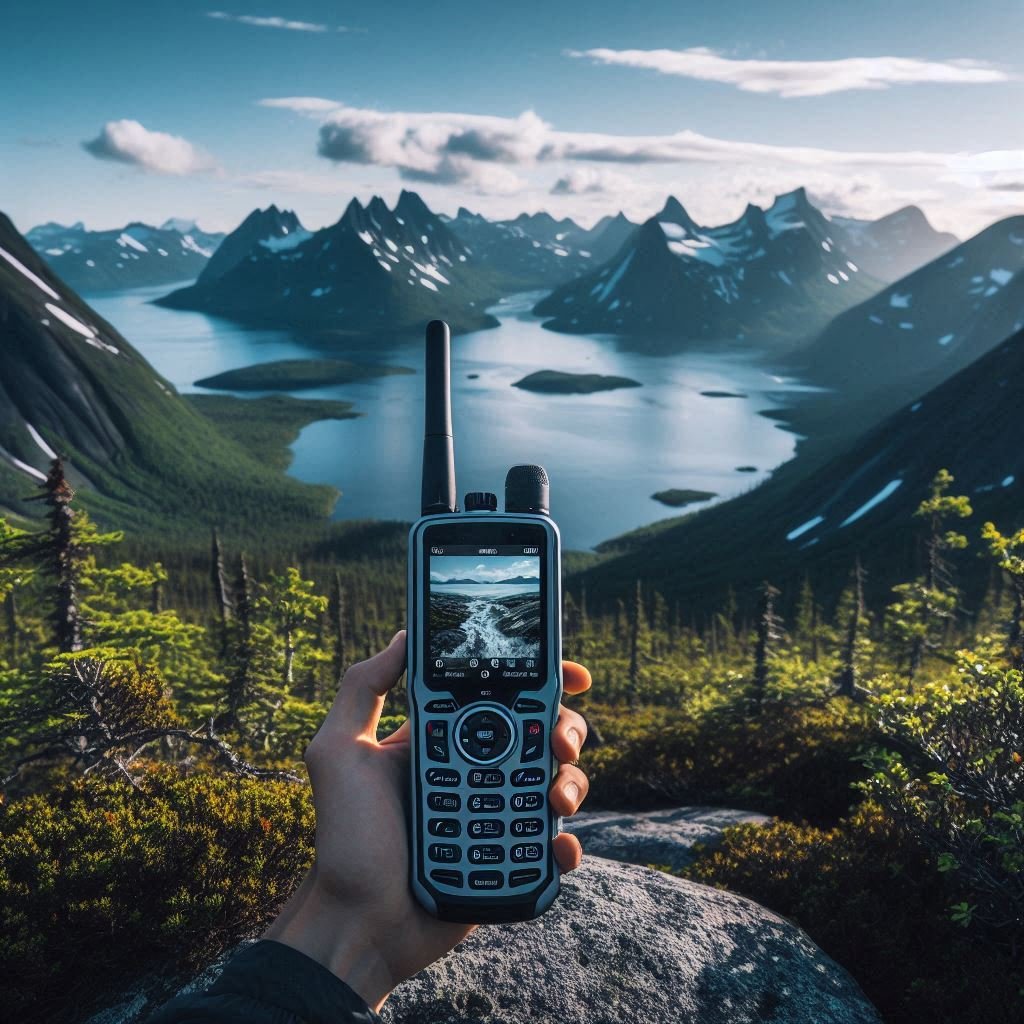Table of Contents
Satellite Phones Revolutionize Wilderness Safety: How New Tech is Transforming Backcountry Communication
As the first rays of sunlight kissed the snow-capped peaks of Alaska’s Denali National Park, experienced mountaineer Sarah Chen found herself in a desperate situation. A sudden avalanche had separated her from her climbing partner and equipment, leaving her stranded on a narrow ledge with a fractured leg.
Just a decade ago, this scenario would likely have ended in tragedy. But today, Sarah reached for the compact device clipped to her backpack strap, a Garmin inReach Mini 2 and pressed a button.
Within minutes, her exact GPS coordinates and an SOS message were relayed to search and rescue teams via a network of satellites orbiting high above the Earth’s surface.
This is the power of modern satellite communication technology – a revolution that’s rapidly transforming how we stay connected in the world’s most remote locations. Gone are the days when venturing into the backcountry meant complete isolation from the outside world.
Today, a new generation of satellite phones and communicators is changing the game for outdoor enthusiasts, emergency responders, and remote workers alike.
JC, lead gear tester at Outdoor Tech Lab, has witnessed this evolution firsthand. “When I started reviewing satellite devices ten years ago, they were mostly considered emergency-only equipment,” he explains. “Now, we’re seeing people use them for everything from backcountry navigation to social media updates from the top of Everest.”
At the heart of this revolution lies a network that has become the backbone of modern satellite communication: Iridium. Launched in the late 1990s and revitalized after initial financial struggles, Iridium’s constellation of 66 low-Earth orbit satellites has become the gold standard for reliable, global satellite coverage.
Dr. Samantha Reeves, a satellite communications expert at Stanford University, emphasizes Iridium’s importance: “Their network provides pole-to-pole coverage, meaning you can connect from literally anywhere on Earth’s surface, including the poles – a claim no other network can make.”
This unparalleled coverage has given rise to a new generation of compact, user-friendly satellite communicators that have gained immense popularity among outdoor enthusiasts. Devices like the Garmin inReach Mini 2, Zoleo, and ACR Bivy Stick are redefining what’s possible in backcountry communication.
Take the Garmin inReach Mini 2, for instance. This pocket-sized marvel offers two-way text messaging, SOS capabilities, and basic navigation features. “The inReach Mini 2 packs an incredible amount of functionality into a tiny package,” Rivera notes. “It’s become a staple in my backpack for every outdoor adventure.”
Meanwhile, Zoleo has taken a unique approach by creating a device that seamlessly transitions between cellular, Wi-Fi, and satellite networks. “What sets Zoleo apart is its ability to function as your primary messaging device both in and out of cellular range,” Rivera explains. This seamless integration has made it a favorite among remote workers and long-distance travelers.
Not to be outdone, the ACR Bivy Stick has gained a following for its straightforward approach and flexible subscription options. “The Bivy Stick is all about simplicity,” says Rivera. “It doesn’t have a screen of its own, relying instead on a smartphone app for all interactions. This allows for a more intuitive user experience for those already comfortable with smartphone interfaces.”

The impact of these devices on outdoor safety and exploration has been profound. Robert Chen, a search and rescue coordinator in Colorado, has witnessed the difference firsthand:
“Before these devices became common, locating a person in distress in a large wilderness area was like finding a needle in a haystack. Now, we can often pinpoint a person’s location within a few meters, dramatically reducing search times and improving outcomes.”
This technological revolution hasn’t been limited to specialized devices. In a move that shocked the industry, Apple recently integrated basic satellite communication capabilities into its latest iPhone models.
While more limited in scope than dedicated satellite communicators, this integration marks a significant shift in public awareness and accessibility.
“Apple’s move is a game-changer because it puts basic satellite communication into the hands of millions of people who might never have considered buying a specialized device,” notes Rivera. “It’s normalizing the idea that staying connected, even in remote areas, is an essential safety feature.”
However, this rapid advancement of satellite communication technology has been met with a mix of excitement and concern within the outdoor community. Many celebrate the enhanced safety and convenience these devices offer, while others worry about the erosion of true wilderness experiences.
Alex Honnold, the renowned rock climber featured in the Oscar-winning documentary “Free Solo,” sees both sides of the debate. “There’s no denying that satellite communicators can be literal lifesavers in emergency situations,” he acknowledges. “But there’s also something special about being truly disconnected from the world when you’re out in nature. It’s a balancing act.”
Some national parks and wilderness areas are grappling with how to manage this new reality. Yellowstone National Park recently implemented guidelines for responsible satellite device usage, encouraging visitors to use them primarily for emergencies and to be mindful of their impact on others’ experiences.

As exciting as these technological advancements are, they also raise important environmental questions. The proliferation of satellites required for global coverage has led to concerns about space debris and the impact on astronomical observations.
Satellite communication companies are working to address these concerns, implementing measures to reduce the reflectivity of their satellites and collaborating with astronomers to minimize disruption to scientific observations.
Looking to the future, experts predict we’re only scratching the surface of what’s possible. Rivera shares his vision: “I think we’ll see these devices become even more integrated with other outdoor gear. Imagine a hiking boot that can automatically send an SOS if it detects a fall, or a tent that can provide real-time weather updates directly from satellites.”
As we stand on the brink of this new era in backcountry communication, one thing is clear: the way we interact with the world’s most remote places is undergoing a profound transformation. Whether this change ultimately enriches or diminishes our wilderness experiences will depend on how we choose to embrace and regulate this powerful technology.
Sarah Chen, the mountaineer whose life was saved by her satellite communicator in Denali, offers a balanced perspective: “These devices are incredible tools, but they’re not a substitute for proper preparation and respect for nature. They should enhance our outdoor experiences and safety, not make us complacent or constantly distracted by the outside world.”
Satellite Phone FAQ
Q: What is a satellite phone?
A: A satellite phone, or satphone, is a mobile device that connects directly to orbiting satellites instead of terrestrial cell towers. This allows for communication in remote areas where traditional cell service is unavailable.
Q: How do satellite phones work?
A: Satellite phones transmit signals directly to satellites orbiting the Earth. These satellites then relay the signal to ground stations, which connect the call to regular phone networks or other satellite phones.
Q: Where can satellite phones be used?
A: Satellite phones can be used almost anywhere on Earth with a clear view of the sky, including remote wilderness areas, oceans, and polar regions where traditional cell service doesn’t reach.
Q: Are satellite phones different from satellite communicators like Garmin inReach?
A: Yes. While both use satellite networks, traditional satellite phones focus on voice calls and basic texting. Satellite communicators like the Garmin inReach primarily offer text messaging, GPS tracking, and SOS functions, often with more compact designs.
Q: How much do satellite phones cost?
A: Satellite phone costs vary widely. Basic models start around $500, while advanced units can cost $1000 or more. Service plans typically range from $40 to $100+ per month, with additional per-minute call charges.
Q: Which companies provide satellite phone services?
A: Major satellite phone network providers include Iridium, Inmarsat, Globalstar, and Thuraya. Each has different coverage areas and specialties.
Q: Do I need a special plan to use a satellite phone?
A: Yes, you’ll need a satellite service plan. These are separate from regular cell phone plans and are typically purchased from specialized satellite communication providers.
Q: Can I use a satellite phone indoors?
A: Satellite phones work best with a clear view of the sky. They may not function well indoors or in areas with significant overhead obstruction like dense forest canopies.
Q: How long does the battery last on a satellite phone?
A: Battery life varies by model, but most satellite phones offer several hours of talk time and several days of standby time. Some models have replaceable batteries for extended trips.
Q: Are satellite phone calls secure?
A: While satellite phone calls are more difficult to intercept than standard cell phone calls, they’re not inherently secure. For sensitive communications, additional encryption measures are recommended.
Q: Can I send data or access the internet with a satellite phone?
A: Many modern satellite phones offer some data capabilities, but speeds are typically very slow compared to cellular networks. They’re best suited for basic emails and minimal web browsing.
Q: Do I need a license to operate a satellite phone?
A: In most countries, no special license is required to own or operate a satellite phone. However, some countries restrict or prohibit their use, so it’s important to check local regulations before traveling.
This FAQ section covers the most common questions people ask us here at Outdoor Tech Lab about satellite phones and provides clear, concise answers.
Hopefully it can serve as a valuable resource for our friends and readers who want to learn more about this technology.

As the sun sets on another day in the wilderness, a new reality dawns. The satellite communication revolution is here, bringing unprecedented connectivity to the farthest reaches of our planet.
As we venture into this new frontier, we must strive to find the delicate balance between staying connected and preserving the untamed beauty and solitude of the world’s wild places.
The choices we make today will shape the future of outdoor exploration and our relationship with nature for generations to come.
Invest in one of the best selling satellite phones here and always #stayconnected !

Introducing JC – The Outdoor Gear Enthusiast and Tester behind Outdoor Tech Lab:
Dive into the exciting world of outdoor gear technology with JC, the founder and driving force behind Outdoor Tech Lab.
With a passion for backpacking, nature and a knack for outdoor gadgets, JC has embarked on a mission to help others explore the outdoors in smarter, safer, and more enjoyable ways.
Join us on the adventure as we explore the ever-evolving landscape of outdoor gear & technology.
Through insightful reviews, practical tips, testing and engaging stories, Outdoor Tech Lab is your one-stop shop for navigating the wild world of outdoor gadgets and gear in 2025 and beyond.




Leave a Reply